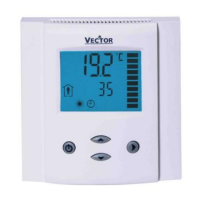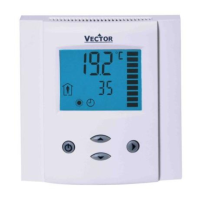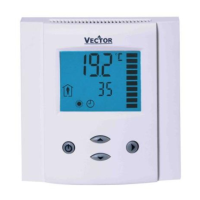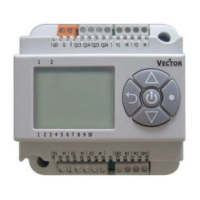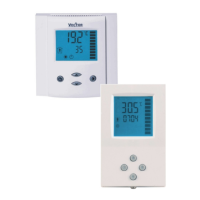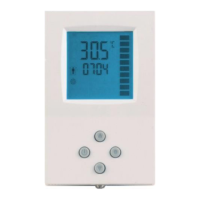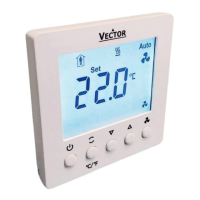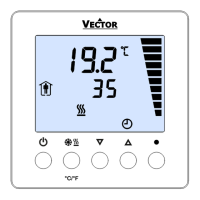TCI-W13, TCI-W23 Universal Controller
CONTROL LOOP CONFIGURATION
Doc: 70-00-0365, V1.0, 20200304 © Vector Controls GmbH, Switzerland Page 9
Subject to alteration
Control loop configuration
Manipulation of the set point (1L and 2L)
Select loop control input (0 = loop disabled):
1 = 1T, 2 = 1H, 3 = 1U, 4 = 2T
Minimum set point limit heating
Maximum set point limit heating
Minimum set point limit cooling
Maximum set point limit cooling
Enable set point compensation (0 = disabled)
1 = winter compensation, 2 = summer compensation,
3 = winter and summer
Loop input special (0 = normal):
1 = combine loop 1 and loop 2
2 = cascade with reverse sequence of primary loop
3 = cascade with direct sequence primary loop
4 = cascade with both reverse and direct sequence of primary loop
Economy mode set point shift: (Function depends on 1L25)
The comfort (occupied) set point is shifted by the value set with parameter.
Reduces the heating set point and increases the cooling set point.
Dead zone between heating and cooling set points
The dead zone span lies between the heating and the cooling set point. The
output is off while the measured value is within the dead zone span. A
negative dead zone is not possible.
Fixed set point in ECONOMY mode
OFF = ECONOMY set point shift applies
ON = In ECONOMY mode use minimum set point limit as set point in
heating mode or maximum set point limit in cooling mode
Set point compensation range, the maximum range the set point is shifted.
0 = Temperature setback: the set point is shifted towards set point limit
➔ Economy mode set points: There are two possibilities to change the set point in economy mode: Shift it by L07 or
switch to the minimum set point limit in heating mode and maximum set point limit in cooling.
Economy mode may be disabled by setting UP06 to OFF.
➔ Control loops and sequences are activated when output parameters are defined.
➔ Cascade control
In cascade control (L06) the set point of the secondary loop is determined by the demand of the primary loop. The
set point of the secondary loop is calculated proportionally according to demand of the primary loop between
minimum and maximum set point limits. Cascade control is activated by setting the parameter XL06 of the secondary
control loop.
A typical application is a variable air volume system where the temperature output determines the pressure set point.
Cascade control example - VAV application
Primary loop = temperature (1L)
Secondary loop = airflow/pressure (2L)
Settings: 2L01 = 20%, 2L02 = 60%, 2L06 = 2
Depending on temperature set
point, the demand is calculated for
loop 1. For example 40%.
Based on demand of loop 1, the set point of pressure loop is calculated
proportionally between min (20%) and max (60%) pressure set point limits.
A demand of 40% will result in a set point of 36% in the above example.
➔ Set point compensation
The set point compensation is typically used to compensate the set point due to a change in outside temperature. The
relationship to the input used to drive the set point compensation is defined in auxiliary functions FU00 to FU07.
➔ Enable summer or winter set point compensation for this control loop with L05. Define the compensation range with
L26. L26 defines the full set point shift once the compensation input has reached its lower limit in winter mode or
upper limit in summer mode.
Setting the range parameter to 0 will activate the set point setback function: The setback function shifts the set point
toward the set point minimum or the set point maximum based on an external input value. Once the compensation
input has reached its lower limit in winter mode or upper limit in summer mode, the set point is fixed to the set point
minimum or maximum value. Commonly this is used for humidity control to avoid condensation on outside walls or
windows in very cold weather.
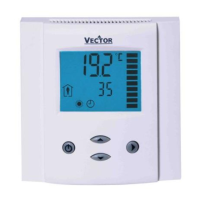
